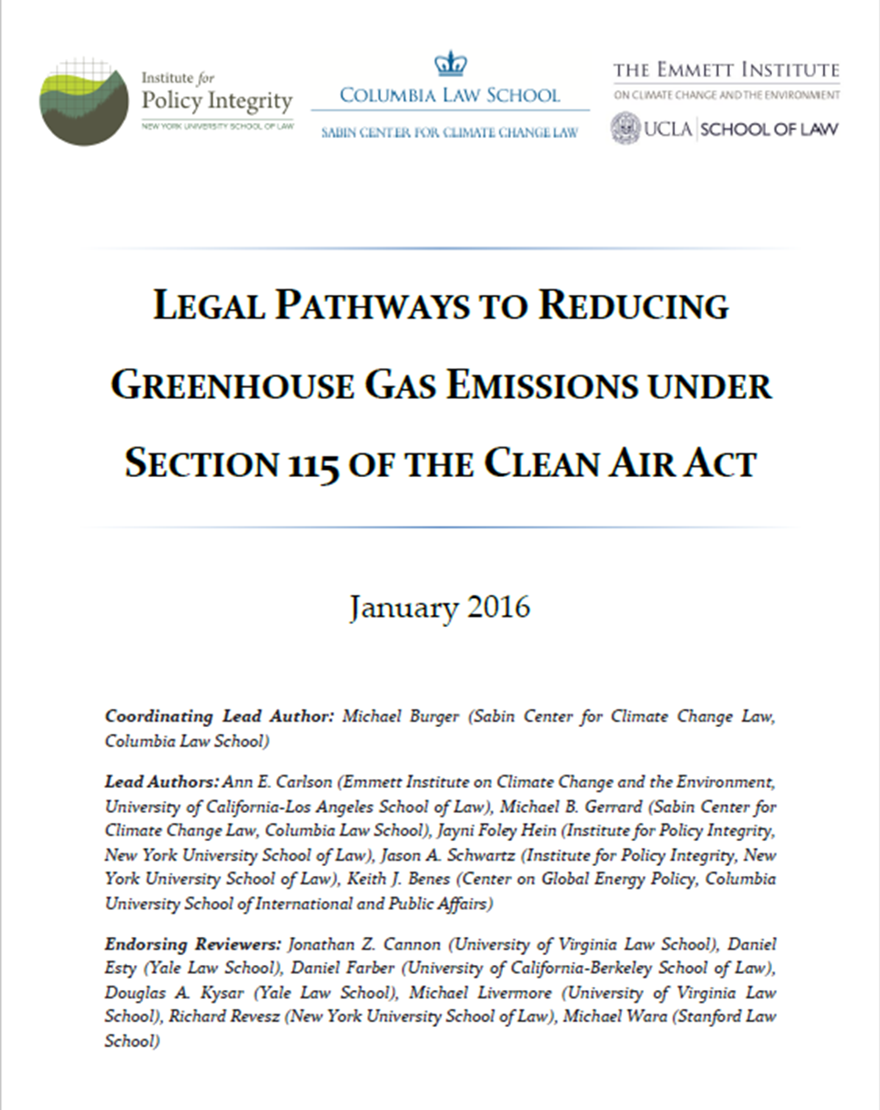Gregory E. Wannier
Deputy Director
CCCL is happy to announce the release of a new white paper. It can be accessed here, and the executive summary for this paper is below:
As the U.S. Congress has failed to pass meaningful climate legislation, the EPA has initiated a series of regulations designed to recognize greenhouse gases as endangering human health and welfare, and set greenhouse gas emission standards for vehicle fleets and for major stationary sources.
Unsurprisingly these efforts have been challenged in the DC Circuit Court of Appeals. Challenges to the Endangerment Finding (which focus on EPA’s reliance on the Intergovernmental Panel on Climate Change) and to the Tailpipe Rule (which claim that it is redundant, and that EPA improperly failed to consider its effects on other regulations) rely on climate skepticism more than they do on legal doctrine. The case against EPA’s Timing Rule, which justifies application of GHG regulations to stationary sources, centers on real ambiguities in the Clean Air Act, though it may fairly claim judicial deference via Chevron v. NRDC. This makes the “Tailoring” Rule claim, that it disregards explicit statutory regulation guidelines (in order to accomplish the “broader intent” of the statute), the strongest challenge to EPA’s actions.
One striking fact about these suits is the pure number of claims: over 80 distinct claims were filed by 35 different petitioners to these four rules. This has necessitated extensive simplification of the litigation, including consolidation into three major cases (and a minor sub-case). Petitioners have sought further to have all three consolidated cases heard by the same panel, perhaps in an effort to link all regulations together as one set of illegal activity. However, the three cases cover three different Titles of the Clean Air Act, so coordination here may not improve judicial efficiency to the extent that has justified coordination of cases in the past.
The petitioners have also moved to stay implementation of EPA’s rules, due to take effect on January 2, 2011. The most relevant question here, apart from a preliminary determination of the merits of the case, will be whether they would suffer “irreparable harm” if regulations were to move forward. This argument will focus around the economic harm to national industries that could come with increased costs, specifically whether it could lead to immediate loss of economic activity; and around the possibility of avoiding a debilitating backlog of building permits once these requirements take hold. The case against staying vehicle regulations looks strong; that against stationary source permit requirements will depend significantly on economic analyses.
There is also some question of what remedy might be appropriate if the DC Circuit rules against EPA in these cases. The two-prong analysis used in such cases will consider the extent of EPA’s deviation from the law and the detrimental effect of immediately overturning existing regulations. Treatment of similar rules in the past suggests that a strong detrimental effect to an established existing permit structure will make courts hesitant to step in with a heavy hand, instead remanding to agencies for modification in line with their decision. Thus, the outcome of motions for stay may well affect the final remedy even beyond its obvious predictive power of the ultimate ruling on the merits: it will determine whether EPA will already have a working regulatory structure in place.
This litigation activity merits attention. In the absence of viable climate legislation for at least two years, these decisions will have important bearing on the extent to which the United States is able to address its greenhouse gas emissions going forward.



